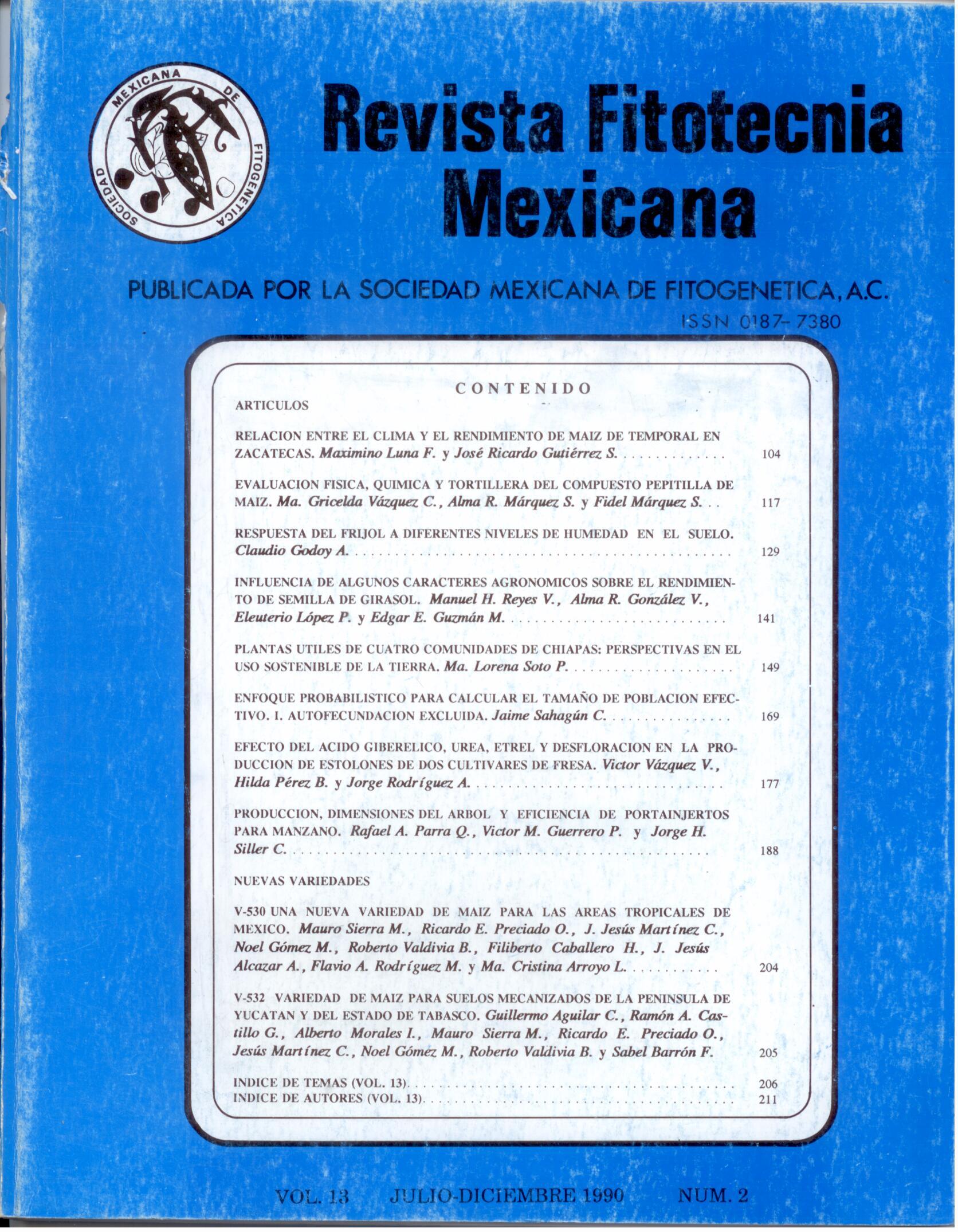RESPONSE OF BEANS TO DIFFERENT LEVELS OF MOISTURE IN THE SOIL
Main Article Content
Abstract
Dry bean (Phaseolus vulgaris L.) responses to variations in water supply is unknown in the Comarca Lagunera region of México. Thus, a study was conducted to estimate an equation to predict yield production based on water supply, and to evaluate the effect of water stress on important phenological phases. This study was performed at the CIFAP-Comarca Lagunera. Treatments were assignated to a randomized complete block in a split plot distribution with six replications. The main plot consisted in three application times for the first irrigation dates (30, 43 and 50 days after planting); subplots consisted of three irrigation intervals after the application of the first (every two weeks, every three weeks and no further water application). Water use efficiency was 1.21 miligrams of dry matter per gram of water, the equation was of the 2nd order, and a linear relation was found between total dry matter and water consumption. The crop coefficient (Kc) was higher in the treatment which had the first irrigation applied 30 days after planting and additional irrigations were every two weeks. Grain yield and total dry matter were signiticantly reduced when the first irrigation was delayed, or when the interval between irrigations was larger than two weeks.

